I’ve come across an excellent resource for explaining Sage Grouse lek behaviors and I simply had to share.
Most of us have seen photos and watched videos of Sage Grouse displaying on their lek (a display ground where courtship behaviors occur). And some have even been lucky enough to visit a lek in the early morning and watch these amazing behaviors but few of us understand what we’ve seen.
Some examples:
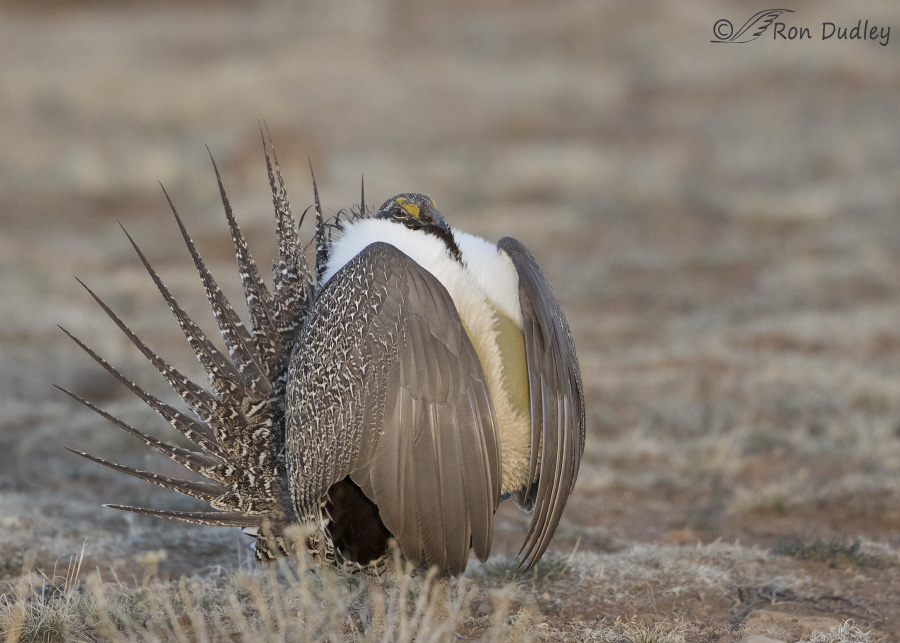
1/640, f/6.3, ISO 1600, Canon 7D Mark II, Canon EF 500mm f/4L IS II USM + EF 1.4 III Extender, not baited, set up or called in
Why do the males wrap their wings around their inflated throat pouches and rub them together?
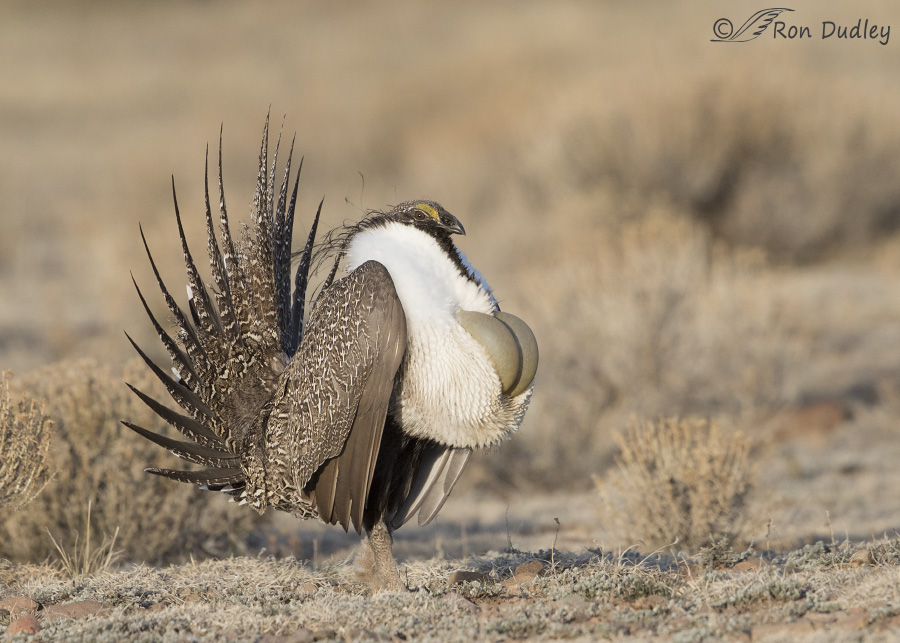
1/1250, f/7.1, ISO 800, Canon 7D Mark II, Canon EF 500mm f/4L IS II USM + EF 1.4 III Extender, not baited, set up or called in
What could the function be of those ridiculous-looking bulges that pop out momentarily during the display?
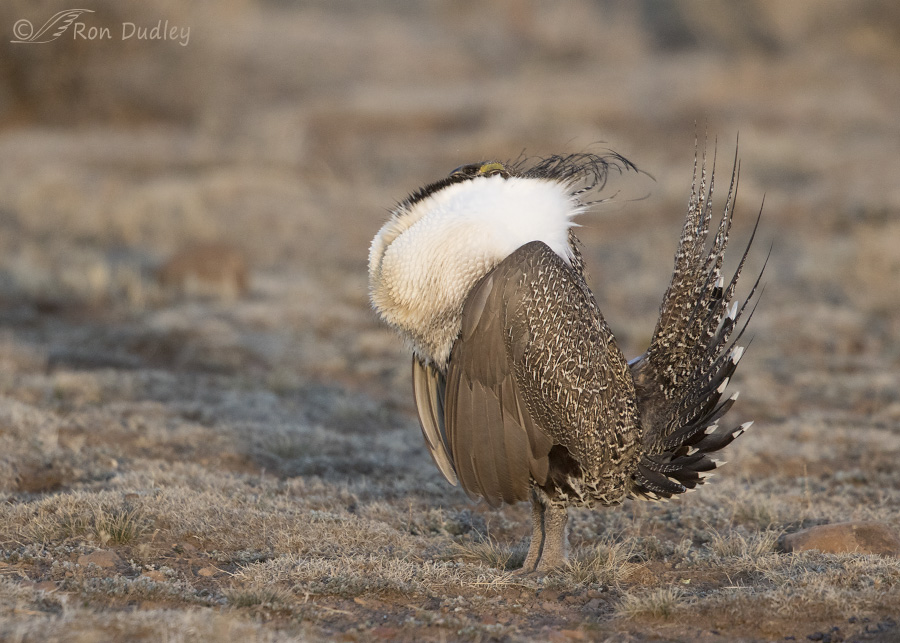
1/800, f/6.3, ISO 1600, Canon 7D Mark II, Canon EF 500mm f/4L IS II USM + EF 1.4 III Extender, not baited, set up or called in
Why does he heave that inflated pouch upward until it often completely engulfs his head…
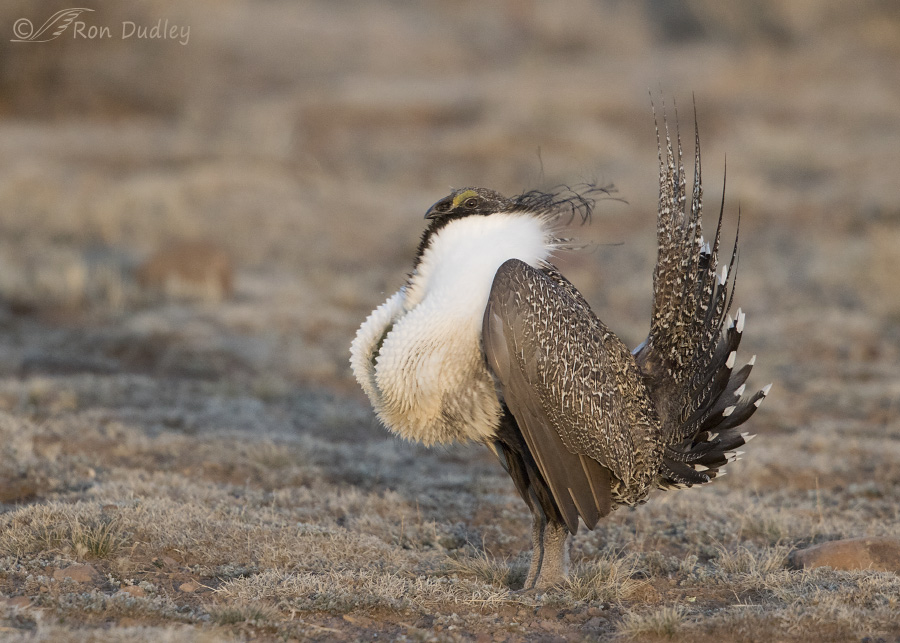
1/800, f/6.3, ISO 1600, Canon 7D Mark II, Canon EF 500mm f/4L IS II USM + EF 1.4 III Extender, not baited, set up or called in
and then drop it back down in a big “plop”?
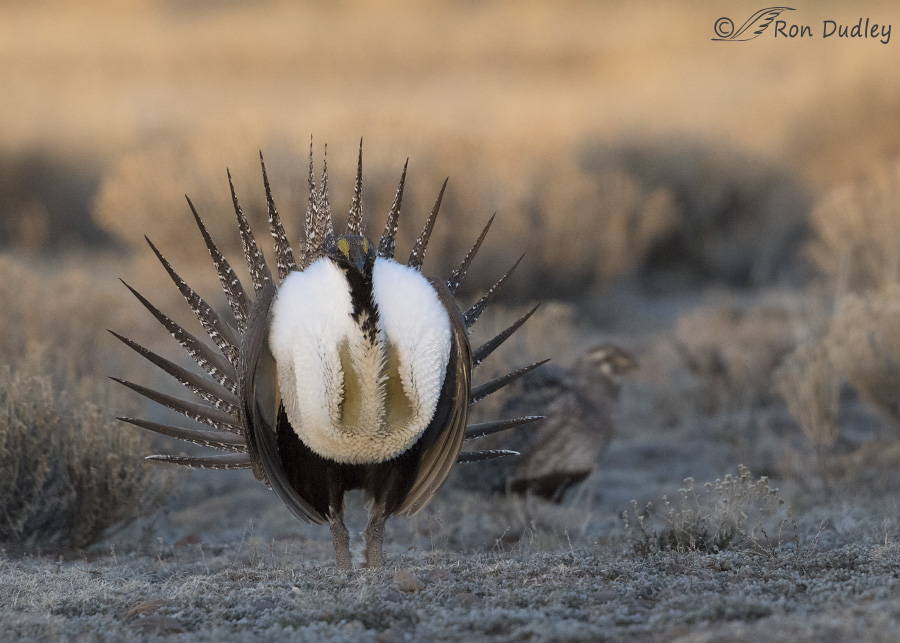
1/800, f/6.3, ISO 2000, Canon 7D Mark II, Canon EF 500mm f/4L IS II USM + EF 1.4 III Extender, not baited, set up or called in
How are the females (there’s one here in the background carefully watching the male) judging the performances of the males in their attempts to decide which one they will mate with?
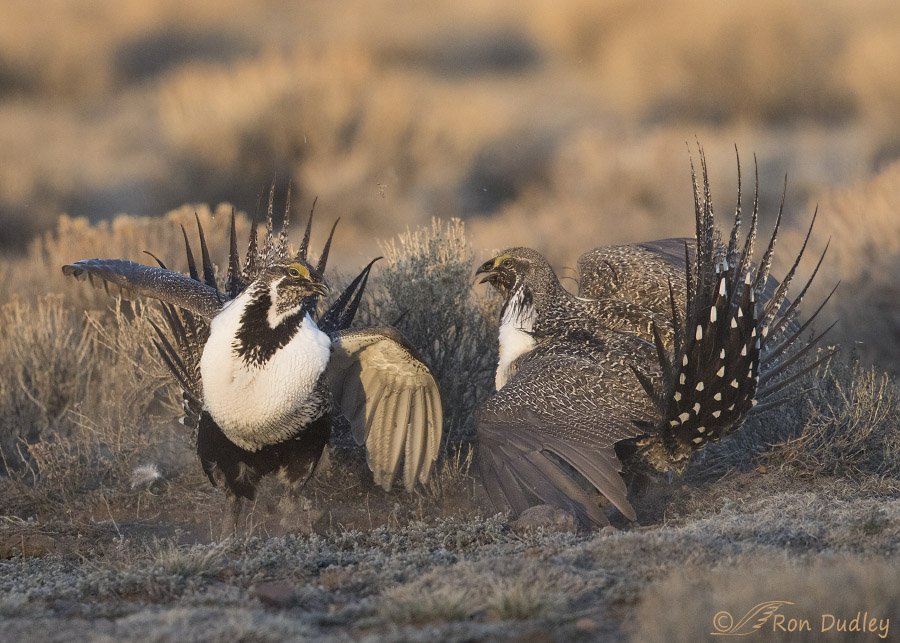
1/2000, f/5.6, ISO 4000, Canon 7D Mark II, Canon EF 500mm f/4L IS II USM + EF 1.4 III Extender, not baited, set up or called in
Why do the males often fight so viciously?
These and many other questions are answered in four short video clips (averaging just over 2 minutes each) recently made available by the Cornell Lab of Ornithology. Each is brilliantly done and both the quality of the videos and their narration are excellent. If you have any interest in or curiosity about Sage Grouse behaviors I highly recommend that you watch each of them, preferably in the order I’ve presented them because they build on each other.
Kudos to the Cornell Lab of Ornithology! I’m delighted to see high quality documentary scientific resources meant for public consumption that aren’t overly dramatic and sensationalized in their presentation and narration. I believe that deplorable trend originated with cable TV and it has pretty much engulfed the entire documentary industry – even some of the previously well-respected big players in the field have been seduced by it and I’m extremely disappointed by that trend. To me it’s just another example of the “dumbing down” of America.
Sorry for the editorializing but I thought it had to be said…
Thanks, Cornell – you resisted!
Ron
Note: Each of these images was taken on a lek in Wayne County, Utah in late March of 2015.


Beautiful photos and I greatly enjoyed the info. I have yet to get to the Henefer Lek, maybe this spring.
These are awesome and thought provoking photos of instants in breeding behavior. This type of information is critically useful for less spectacular displays when one is trying to decide if a bird is displaying a breeding behavior.
I have been trying to identify these quick, specific actions while reporting data to the Wisconsin Breeding Bird Atlas II for the last couple of years. (Atlas info at wso.org site.) Although MacCauley Library at Cornell has a huge collection of photos and videos for each species, the images of breeding behavior are not usually included in the BNA descriptions. Here a picture really beats a written description. The best source I have found so far for behavioral postures are the line drawings in Stokes 3 Bird Behavior Guides (1979 – 1989).
Thanks so much for all this great info!
Late to the party, Ron, but I had to tell you how much I enjoy the detail in your Sage Grouse photos. Sensational details of a remarkable species. Thanks again for posting, and adding the excellent Cornell links.
I found this behaviour very interesting in each and every short clip. thanks for linking us up to Cornell.
I found/made time to watch.
Awe and wonder.
Thank you. And Cornell.
When time is more on my side I will definitely come back to watch the videos. Thank you. And Cornell.
Those ridiculous looking bulges? They look sadly like breast augmentation…
I hope you find the time to watch them, EC. They’re very good.
I always enjoy watching their displays. It’s sometimes humorous and always fascinating to view. Now I know a little about what is actually happening! Thanks to Cornell for the videos and to you for sharing.
Those videos are excellent, aren’t they, Larry?
Thanks for the links…Fascinating!!! They raised as many questions as they answered…sure wish I could see into the minds of the females!!! Am amazed that one male can actually mate with so many females, especially in ONE DAY!!! Also, if one, chosen male gets to mate, what effects does this have on diversity(or lack of it) in the gene pool, on genetic strength? Does it strengthen it or weaken it? It seems almost incestuous….do any of the other males get to mate at all???
A few of the others mate but not very many and not very often.
I wondered the same thing – it seems that hybrid vigor might be diminished in sage grouse but maybe the advantage of passing on the genes of the most fit male outweighs that…?
Could Dolly Parton actually be a MALE. Sage grouse??? These are very impressive, imposing critters! We MUST protect them and, of course, their habitat!!! They are prescious icons of our past, our history, and as importsnt as anything in the SMITHSONIAN. Or any other museum! It’s VITAL that we protect them, the environment other wild (and domestic) critters from the potentially “diasterous” policies of “the D. “Duck”!!!
You’re right of course, Patty – sagebrush steppe habitat is disappearing very quickly and I constantly see evidence of that. It’s depressing.
I have not yet watched the videos, but I had to say that I couldn’t agree with you more about cable TV documentaries. I won’t watch them. I am reminded of the time I was at the zoo in Salisbury MD when it was time to feed their Red-tailed Hawk. They gave it a young chicken, and I watched it eat, surprised by how gentle and peaceful the process was. That was many years ago now, but something that I’ll never forget. Clearly there is some violence in nature, but those documentaries exaggerate it, I guess to give people the adrenaline rush they crave (getting it from TV instead of living an interesting life). I’ll get off my soapbox now…
Make room on your soapbox for me, Susan!
OMG, Ron – the photos and your shared videos from Cornell are SO fantastic!! I saw the PBS special on the Sagebrush Sea (which I remember you had also seen)and found all the footage on the Grouse very interesting. I will probably never see them on a Lek but I so enjoyed seeing the whole behavioral mating process. I especially remember the “plop” sound they make with their inflated pouches. What also amazed me is that ALL the female Grouses select only a few of the males to repeatedly mate with and all the other males are out of luck!! Life is really tough for all the grouse but especially for the poor males that aren’t chosen!!
I don’t know, Jo Ann – maybe the male that deserves our sympathy is the one all the females mate with…
Hi Ron,
Wonderful images, and thank you for the the “lek links”. As you know, you and I are fellow members of the Cornell Lab fan club. A GREAT organization. And, your comments reminded me of my trips to Sage Grous leks – it’s been years, but the memories are still with me. Protocol and ethics dictate that one does not leave the lek until after the last bird so, in addition to preparing for the cold, one needs to be coffee-free (or very creative) on those occasions…
And then there was the time three of us visited a Lesser Prairie Chicken lek east of Roswell, NM. I remember departing our motel at 4 AM and seeing several meteors falling. We were well aware of what Roswell is famous for, so we began to wonder if they were UFO’s.
 BTW, the local bird club called themselves the UFO’s (United Field Ornithologists, I think). Memories…
BTW, the local bird club called themselves the UFO’s (United Field Ornithologists, I think). Memories…
Cheers,
Dick
Dick, you have nothing on me in the creative department when it comes to dealing with the diuretic effects of coffee. I’m the king of creative…
What a fascinating series, but then sage grouse are fascinating birds. As usual, your photographs are just stunning, well into the Oh WOW arena with all those superlatives attached. Also as usual, Cornell’s work is firmly in that arena, too.
The “elite male” concept brings up a big question, though. If that one male is fathering the majority of the chicks, how do they overcome the issue of inbreeding in successive generations? Thinking out loud, I’m guessing that life spans of both males and females play a role for mother/son, father/daughter matings, but you’d think there would be an issue of same generation, brother/sister inbreeding?
Just another case of one answer opening up a whole bunch of new questions
Laura, I imagine the answer to your question is dispersal. I suspect the juveniles disperse far and wide so there’s little chance of them interbreeding with related birds. I don’t know that for sure though…
I wondered the same thing….
I think the preponderance of one male’s impact on a generation or two might be a common occurrence in chicken-like birds that have displaying grounds. It might even apply to wild turkeys.
Line breeding is something animal breeders occasionally use to “set”(make homozygous) desirable traits. Offspring and second generation individuals from these crosses are carefully watched for any additional undesirable traits that might accompany the trait selected for when using this technique.
Many thanks for posting all 4 of these videos, educational, interesting and well done. Cornell is a wonderful resource.
Great images, beautiful! !
Been to a lek before dark, cold, sun came up – result nothing, big disappointment, BUT it was fun just the same!
Thank you for this post, much appreciated.
Sounds like your lek experience was a frustrating one, Dick. That’s too bad. I’ve had several experiences at leks and each time was memorable. What really made it nice was that nobody else was there so Mia and I had it all to ourselves. That made the experiences extra special.
AWESOME SERIES RON!!!
Charlotte
Thanks, Charlotte.
Very very interesting. And your images are great.
Those guys sure have a hard time to achieve their goals. I wonder if the human race had to do the same in order to procriate.
I guess that would be the answer to prevent worlds growing population.
Thank you very much for today’s lesson.
You pose an interesting question, Jorge. I guess humans compete for mates, just in different ways (usually…).
Beautiful shots of the grouse and Thx for providing the video links. VERY interesting!
Thanks, Judy. I think those videos are exceptionally well done.
Great resource, Ron, thanks. Cornell puts out some wonderful material. Fascinating displays to watch. I like how your stills really show the detail of each posture, things that are easy to miss in videos, though these ones do a great job of slowing down the video enough and showing multiple angles. Amazing birds and behaviors. Did you photograph these from the vehicle or any other sort of blind?
Todd, I was in my pickup when I took these shots. I arrived at the lek when it was still completely dark and waited for the sun to come up. About froze my butt off because it was extremely cold (a high elevation lek in March) and of course I had to keep my windows down for photographing and I couldn’t start the engine to keep warm for fear of disturbing the grouse.
Thanks Ron for posting the pix and also the links to Cornell Lab video. Cornell is a wonderful source of bird information. I am using their eBird database now to record all my bird sightings. They are truly a Class Act!
“They are truly a Class Act”
I couldn’t agree more, Mark. And that belief becomes reinforced with each passing day – especially as I become more familiar with their new edition of the Handbook of Bird Biology.